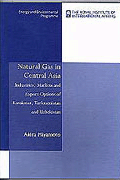Most American middle market companies remain solely
focused on their domestic market, despite expanding global
opportunities and a national campaign to promote exporting.
As a result of this unrealized potential, these businesses forgo
greater profitability, diversification, and other competitive
advantages derived from engaging internationally. And
regions lose a primary source of sustainable, high-wage job
creation and economic growth.
The international demand for goods and services that U.S. middle market firms provide is being driven by rapid urbanization, an explosion in global middle class buying power, and continued globalization of large firms and their
supply chains. New technologies offer selling platforms that
enable mid-size businesses easier and cheaper access to
foreign markets. Established and new trade agreements have
lowered trade barriers. And regulatory barriers are being
addressed with federal reforms like the national “electronic
single-window” under development for U.S. exporters.
Despite these opportunities, just 40 percent of middle market
companies make exporting part of their business model.
The middle market firms that do take advantage of exporting
perform better than their peers. Whether in manufacturing or
services, those businesses tend to generate stronger revenues
and overall growth, and report strategic and operational
benefits from global engagement. Yet National Center for
the Middle Market (NCMM) surveys and other research
studies consistently show that mid-size firms as a group are
not maximizing their exporting promise, and not even fully
considering the possibilities.
The centrality of middle market firms to U.S. exporting is
further validated by the practical experience of 20 diverse
metropolitan areas that created tailored regional export
strategies over the past two years. Economic development
coalitions of business, government, and civic leaders, advised
by the Brookings Institution, worked on metro export plans
through the Global Cities Initiative (GCI).
They undertook comprehensive local market assessments
to identify needs and opportunities, including data analysis
and hundreds of individual in-depth interviews with company
leaders. They then applied that intelligence to take actions
that would generate the greatest return in helping local
businesses increase exporting.
Across these regions—large and small, coastal and inland,
manufacturing and service economies—a consistent outcome
of the metro export plans was a new, proactive focus on
middle market firms. From Los Angeles to Des Moines and
Atlanta to San Antonio, these plans are revealing the power
of mid-size businesses in economic development and job
creation, the potential and special challenges they confront
in exporting, and the tailored ecosystem supports they need
to succeed.









